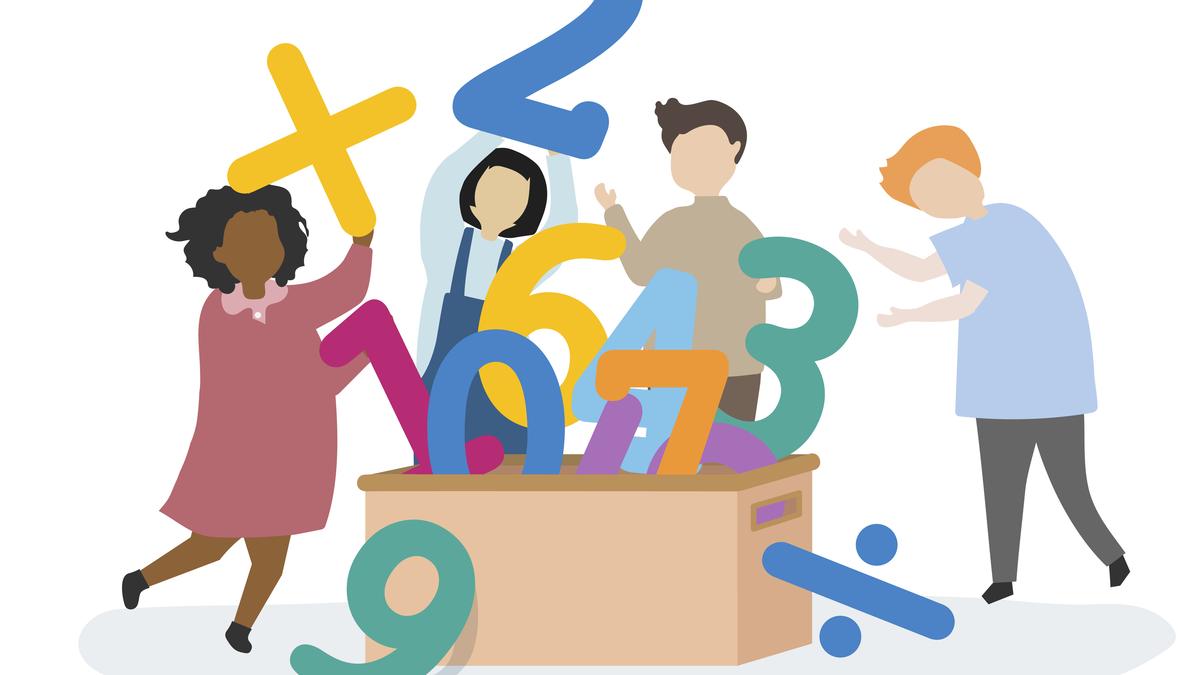- Courses
- GS Full Course 1 Year
- GS Full Course 2 Year
- GS Full Course 3 Year
- GS Full Course Till Selection
- Answer Alpha: Mains 2025 Mentorship
- MEP (Mains Enrichment Programme) Data, Facts
- Essay Target – 150+ Marks
- Online Program
- GS Recorded Course
- Polity
- Geography
- Economy
- Ancient, Medieval and Art & Culture AMAC
- Modern India, Post Independence & World History
- Environment
- Governance
- Science & Technology
- International Relations and Internal Security
- Disaster Management
- Ethics
- NCERT Current Affairs
- Indian Society and Social Issue
- NCERT- Science and Technology
- NCERT - Geography
- NCERT - Ancient History
- NCERT- World History
- NCERT Modern History
- CSAT
- 5 LAYERED ARJUNA Mentorship
- Public Administration Optional
- ABOUT US
- OUR TOPPERS
- TEST SERIES
- FREE STUDY MATERIAL
- VIDEOS
- CONTACT US
Gender Gap in Math Emerges Early: Study
Gender Gap in Math Emerges Early: Study

Why in the News?
- A new study conducted in France has revealed that boys and girls start school with the same mathematical abilities, but a gender gap begins to emerge as early as the first grade.
- This discovery raises critical concerns about:
- gender bias in early education
- long-term impact on STEM (Science, Technology, Engineering, Mathematics) representation.
Key Highlights
- Large-Scale Study: The study assessed over 26.53 lakh children over four years (2018-2022) using EvalAide, a national test in France.
- Consistency Across Demographics: The gender gap was observed regardless of region, school type (private or public), or socioeconomic background.
- Early Performance Patterns: Boys showed a tendency to cluster at both high and low ends of performance, while girls were more concentrated in the middle.
Causes of Gender Gap in STEM Fields
- Societal Stereotypes and Biases
- Deep-rooted beliefs that boys are naturally better at science and math.
- Girls are often encouraged toward arts or caregiving professions.
- Stereotype threat: Girls may underperform due to fear of confirming negative stereotypes.
- Early Gender Conditioning
- From an early age, girls may receive less encouragement in math and science.
- Toys, books, and activities offered to girls often focus on nurturing, not technical skills.
- Teacher Bias
- Teachers may unintentionally favor boys in science/maths discussions.
- Less attention and fewer challenging questions are directed at girls.
- Parental Expectations
- Parents may attribute sons’ success to intelligence, but daughters’ success to hard work.
- Girls may not be encouraged to pursue engineering or technology fields.
- Lack of Role Models
- Few female scientists, engineers, or coders are highlighted in textbooks or media.
- Absence of women mentors in schools and colleges discourages girls from continuing in STEM.
- Workplace Discrimination and Hostile Environments: Women in STEM careers face:
- Gender pay gaps
- Limited promotions
- Sexual harassment or exclusion
- These factors contribute to higher dropout rates from STEM jobs.
- Limited Access to Opportunities
- In rural or low-income areas, girls have less access to digital tools and STEM-related extracurriculars.
- Poor infrastructure and safety concerns deter girls from pursuing higher studies in STEM.
Government Initiatives to Reduce Gender Gap in STEM in India
- Schemes and Initiatives by DST (Department of Science and Technology)
- KIRAN (Knowledge Involvement in Research Advancement through Nurturing)
- Aims to bring back women who had a break in their careers into research.
- Offers fellowships, training, and support for women scientists and technologists.
- WISE (Women in Science and Engineering)
- Launched in 2023 by DST.
- Offers fellowships to women researchers in STEM disciplines.
- Promotes R&D in societal problems through women-led projects.
- Vigyan Jyoti Programme
- Targets girls from Class 9–12, especially in underrepresented groups.
- Offers mentoring, lab exposure, motivational talks, and visits to premier institutions.
- Aims to increase participation in IITs, NITs, and STEM careers.
- GATI (Gender Advancement for Transforming Institutions)
- Piloted by DST to help institutes create gender equity action plans.
- Inspired by UK’s Athena Swan Charter.
- Promotes institutional reforms in hiring, mentoring, and promotions for women in STEM.
- KIRAN (Knowledge Involvement in Research Advancement through Nurturing)
- Schemes by Ministry of Education
- Rashtriya Avishkar Abhiyan (RAA)
- Promotes STEM education through experimentation and innovation at school level.
- Focuses on girls’ participation in science clubs, competitions, and labs.
- INSPIRE (Innovation in Science Pursuit for Inspired Research)
- Scholarships and mentorship for students (including girls) to pursue natural sciences and research.
- Rashtriya Avishkar Abhiyan (RAA)
Challenges and Way Forward
|
Challenges |
Way Forward |
|
Emergence of Bias in Early Years: Subtle gender biases may affect teacher expectations and student confidence. |
Teacher Training: Equip teachers to engage boys and girls equally in class and reinforce non-gendered encouragement in STEM. |
|
Lack of Intervention in Primary Education: Primary school teachers, particularly women, may unintentionally reinforce stereotypes. |
Focus on Early Education: Intervene early by offering gender-sensitive pedagogy in math education. |
|
Stereotypes Held by Parents: Parents might associate diligence with girls and natural intellect with boys. |
Awareness Campaigns: Sensitize parents about non-biased support and avoid reinforcing stereotypes. |
|
Confidence Gap: Girls may begin doubting their abilities despite having the same potential. |
Encouragement Through Exposure: Introduce more female role models and offer equitable exposure to math-related activities. |
Conclusion
There is an urgent need to address the gender gap in mathematics from the very first year of schooling. The study’s data-driven insights dismantle the myth that boys are inherently better at math and point towards societal and educational biases as the root cause. Systematic interventions in teacher training, curriculum design, and parental awareness are essential to ensure that girls are not held back by invisible barriers in their formative years.
|
Ensure IAS Mains Question Q. Despite various government interventions, a significant gender gap persists in STEM education and careers in India. Discuss the causes of this gap and evaluate the effectiveness of recent policy measures to bridge it. (250 Words) |
|
Ensure IAS Prelims Question Q. Consider the following statements regarding Indian Government initiatives for women in STEM Statement 1: The 'Vigyan Jyoti' program, initiated in 2019, aims to address the gender gap in STEM fields at the school level by providing opportunities for meritorious girls to pursue STEM education. Statement 2: The 'KIRAN' scheme, launched in 2014, exclusively focuses on providing fellowship and research opportunities for women scientists who have taken a career break. Which one of the following is correct in respect of the above statements?
Answer: c Explanation: Statement 1 is correct: Vigyan Jyoti was launched in 2019 to encourage girls to pursue STEM education. It identifies meritorious girls from class 9-12 and provides them with exposure to various STEM fields through interactions with scientists, lab visits, and science camps. Statement 2 is incorrect: The KIRAN scheme is not limited to women returning from a career break. It has multiple components:
It caters to women scientists at various career stages, including active researchers and re-entrants. |
|
Also Read |
|
| NCERT Books For UPSC | |
| UPSC Monthly Magazine | Best IAS Coaching in Delhi |




